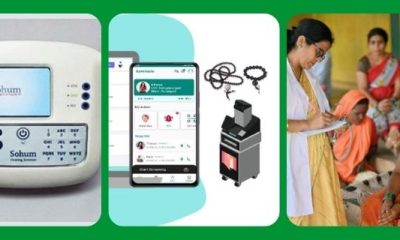New Delhi: Rising air pollution in Delhi and other parts of the country is having a side-effect of a different kind, a rise in the demand for air purifiers. An air purifier is a device that helps to clean the air by removing various pollutants, improving the overall indoor air quality. It does so by filtering the air and trapping particles like dust, pollen, pet dander, smoke, mould spores, and other allergens.
“In the past 4-5 days, we have witnessed a 15-20 per cent increase in demand, as people anticipated the need for a solution to combat the polluted air,” Mahesh Gupta, CMD, Kent RO Systems Ltd, told news agency PTI.
Xiaomi said it has witnessed a ten-fold increase in air purifier sales this week.
Daikin India CMD KJ Jawa claimed that the air purifiers manufactured by the company are “equipped to solve this challenge of air pollution through HEPA filters and patented streamer technology.” He added,
We are also offering free lifetime HEPA filter to ensure customers don’t have to pay much for long-term care of their health.
Also Read: Children And Air Pollution: How To Protect Children From The Impact Of Air Pollution
But do air purifiers help mitigate the poor air quality inside the room? Dr Arvind Kumar, Chairman of the Institute of Chest Surgery, Chest Onco-Surgery and Lung Transplantation at the Medanta – The Medicity in Gurugram said,
If anyone says air purifier is a solution to pollution, the answer is a big no. However, I will make a few exceptions because I am myself recommending this to my patients.
Explaining the working of an air purifier, Dr Kumar said,
An air purifier is like an air conditioner. There is a pump which sucks in air from your room, makes it pass through a mechanical filter, usually, HEPA (High Efficiency Particulate Air) filter, and then the air is thrown back into the room.
However, for an air purifier to effectively work, the room or the indoor space where an air purifier is being used has to be sealed and closed, with windows and doors shut. Dr Kumar added,
The air handling capacity of the unit has to match the size of the room and the filter has to be proper – new and usable. Then, the purifier will mechanically trap the particulate matter and give you clean air.
Dr Sachin D, Consultant – Interventional Pulmonology, Critical Care & Sleep Medicine, Fortis Hospital recommends using an air purifier with both absorption and adsorption capabilities to address both particulate matter and gaseous pollutants. This is because, air pollution consists of varied harmful gases including Ozone (O3), Sulphur dioxide (SO2), nitrogen dioxide (NO2) and carbon monoxide.
It’s important to note that air purifiers are costly, ranging from Rs. 500 to over a lakh, making clean air a luxury. The only way out is to reduce pollution levels and breathe clean.
Also Read: Impact Of Worsening Air Pollution And How To Protect Yourself From It
NDTV – Dettol have been working towards a clean and healthy India since 2014 via the Banega Swachh India initiative, which in its Season 10 is helmed by Campaign Ambassador Ayushmann Khurrana. The campaign aims to highlight the inter-dependency of humans and the environment, and of humans on one another with the focus on One Health, One Planet, One Future – Leaving No One Behind. It stresses on the need to take care of, and consider, everyone’s health in India – especially vulnerable communities – the LGBTQ population, indigenous people, India’s different tribes, ethnic and linguistic minorities, people with disabilities, migrants, geographically remote populations, gender and sexual minorities. In a world post COVID-19 pandemic, the need for WASH (Water, Sanitation and Hygiene) is reaffirmed as handwashing is one of the ways to prevent Coronavirus infection and other diseases. The campaign will continue to raise awareness on the same along with focussing on the importance of nutrition and healthcare for women and children, fight malnutrition, mental well-being, self-care, science and health, adolescent health & gender awareness. Along with the health of people, the campaign has realised the need to also take care of the health of the eco-system. Our environment is fragile due to human activity, which is not only over-exploiting available resources, but also generating immense pollution as a result of using and extracting those resources. The imbalance has also led to immense biodiversity loss that has caused one of the biggest threats to human survival – climate change. It has now been described as a “code red for humanity.” The campaign will continue to cover issues like air pollution, waste management, plastic ban, manual scavenging and sanitation workers and menstrual hygiene. Banega Swasth India will also be taking forward the dream of Swasth Bharat, the campaign feels that only a Swachh or clean India where toilets are used and open defecation free (ODF) status achieved as part of the Swachh Bharat Abhiyan launched by Prime Minister Narendra Modi in 2014, can eradicate diseases like diahorrea and the country can become a Swasth or healthy India.




















